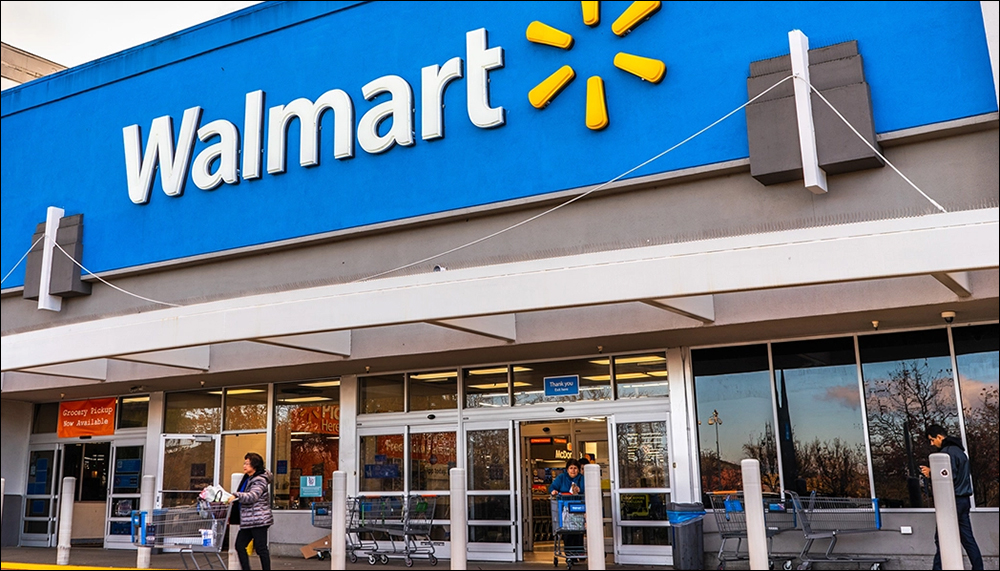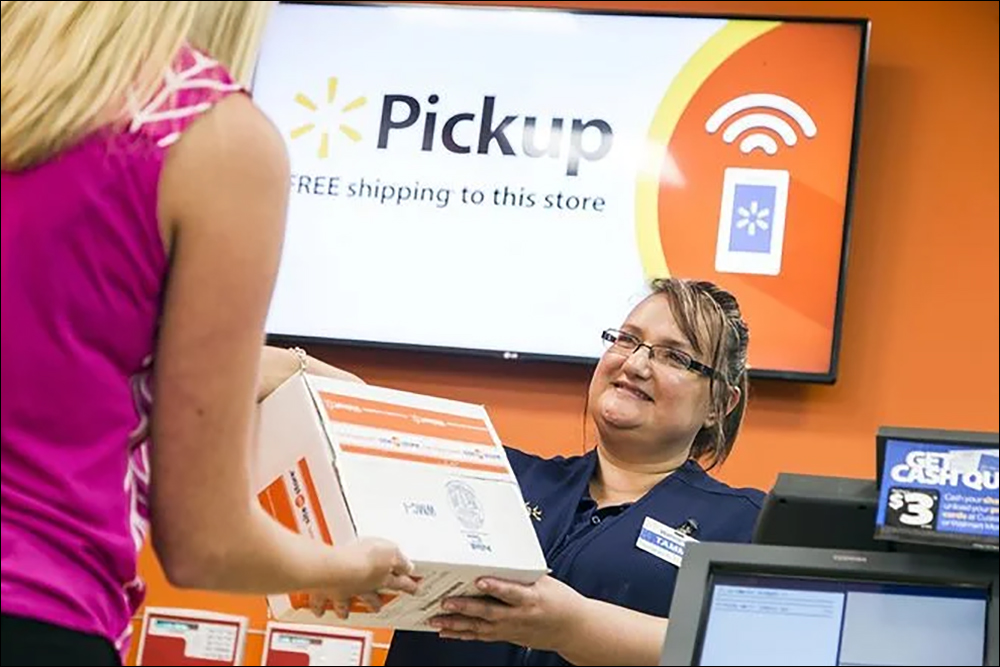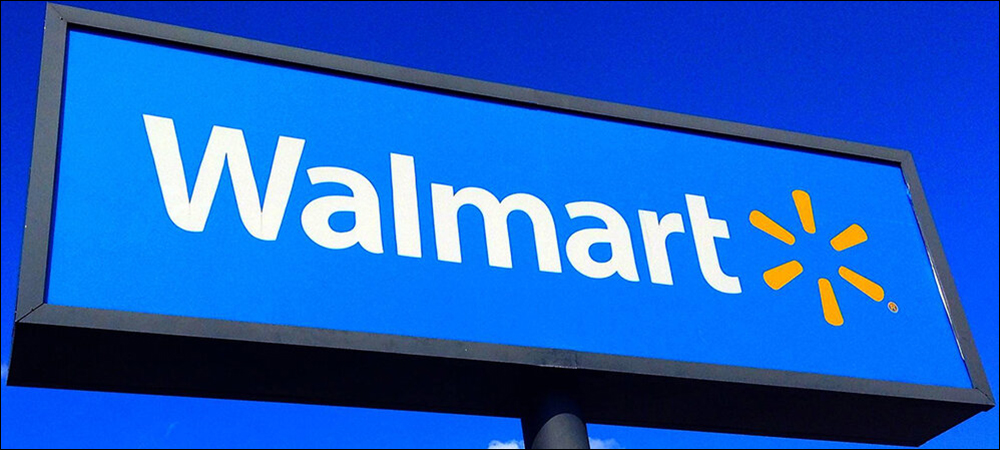Global retailer Walmart is proceeding with mandates for radio frequency identification technology, requiring its suppliers in some departments to include RFID tags on all products provided to the store by September 2, 2022. The mandate includes makers of home goods products, as well as some hard lines (such as hardware and automotive products), as well as some entertainment and toys. The mandate follows an expansion of RFID use in the stores for apparel goods.
In 2020, Walmart began to deploy UHF RFID technology at its stores to track apparel goods as they were received, displayed and sold. The passive UHF RFID labels are linked to each garment to create a unique identity that can be captured via handheld or fixed readers. That makes it possible for the retailer to ensure proper stock levels at each store, and to thus ensure on-time replenishment. Since launching the technology, says Shelly McDougal, Walmart’s senior director of merchandising, “We have seen dramatic results in our ability to ensure product is available for our customers, leading to improved online order fulfillment and customer satisfaction.”

As a result of this success, Walmart says it decided to expand with this most recent mandate. To support its suppliers, the company plans to host training sessions and share standards and technical requirements to help get them started. Many suppliers, an unnamed Walmart spokesperson says, are already familiar with RFID and have a current system in place by which they are applying tags to products to meet the needs of other retailers. Further mandates could be ahead. Going forward, McDougal adds, “We look forward to expanding the technology into more categories to further improve inventory accuracy across the business, provide a better in-store shopping experience for customers and drive more online and pick-up-in-store capabilities.”
Walmart is one of the world’s largest retailers. By issuing this latest mandate, the company may prompt further adoption of RFID technology for inventory accuracy and other in-store or supply chain processes. In this way, Walmart is a bellwether and a leading indicator in the RFID industry for technology innovation, according to Sandeep Unni, a senior director analyst at Gartner‘s retail industry research practice. “A mandate coming from them could just be the tipping point for other retailers to further adoption,” he states.

Shelly McDougal
The mandate comes nearly two decades after a previous mandate, when the company had required its suppliers to put RFID tags on all goods. That effort began in 2005 with Walmart’s top 100 suppliers, involving 500 stores and five distribution centers. A year later, Walmart expanded the program to 500 suppliers so they, too, would be required to apply RFID tags (see Walmart Draws Line in the Sand, Walmart Spells Out RFID Vision, Walmart Expands RFID Mandate, Walmart Details RFID Requirement, Walmart Relaunches EPC RFID Effort Starting With Men’s Jeans and Basics and Does Walmart Use RFID?). In 2007, however, the retailer began moving away from its sweeping mandate.
Unni likens the evolution of Walmart’s RFID technology adoption to a full circle, describing it as “from universal hype to the inevitable fizzle to a pandemic-triggered renaissance.” Inventory accuracy has long been a widespread pain point in retail that could be solved by RFID, he notes, though throughout the past decades, “What has changed now is the newfound urgency for store inventory accuracy triggered by the enormous rises in store-based ecommerce fulfillment in the aftermath of the pandemic.” Walmart, Unni says, has invested heavily in this area through its “buy online, pick-up in store” (BOPIS) and curbside programs, as well as new offerings like Walmart+.

Sandeep Unni
In addition, the cost of RFID technology has been dropping. Several studies, such as a report from McKinsey & Co., have shown that the price of UHF RFID tags has dropped by up to 80 percent since the first Walmart mandates, bringing the cost down to about 3 to 5 cents per tag in large volumes. That is in addition to the technology’s continued improvement in read sensitivity and accuracy. These days, RFID typically delivers better than 97 percent inventory accuracy, Unni says, “all in a climate of historical labor challenges—which will undoubtedly help to justify ROI [return on investment].”
For suppliers, whether or not they are among those now being mandated, Walmart’s decree may signal that it is time for them to revisit or introduce themselves to RFID technology. “The biggest benefit for suppliers will be more economies of scale,” Unni explains, “which will further justify them down the path of universal item-level tagging of their goods, which will only help create a virtuous adoption cycle by retailers. Of course, Walmart will be only one part of that equation, but a significant one nonetheless.”

Jonathan Gregory
While Walmart’s initial 2005 mandate may have been ahead of its time, many of the obstacles it faced back then have since been alleviated. The technology was still at its infancy, Unni notes, and no industry standards had yet been established two decades ago. Suppliers were thus left to learn best practices for compliance when none existed, while having to make five-figure investments on high-cost technologies. A lack of maturity, he adds, meant most midsized or smaller suppliers were either deterred from participating or doomed if they did so. “While not without obstacles, I think the RFID market is a much different place now,” Unni states.
Walmart has worked with the Auburn University RFID Lab and GS1 US in the past to ramp up its apparel-tagging program. GS1 US, an information standards nonprofit organization, provides resources to the retailer’s suppliers, as well as to other industry stakeholders that need standards guidance and education, says Jonathan Gregory, GS1 US’s director of community engagement.

Brendan Witcher
Gregory says he has witnessed a relatively smooth transition for most manufacturers from a data perspective, since they are already using GS1 identification standards in the form of UPC barcodes that contain a Global Trade Item Number (GTIN) value, which is also part of the RFID tag and coding. The RFID tag is often integrated into the price tag, which includes the barcode. “GS1 US provides guidance on details such as tag placement,” Gregory says, and representatives from Walmart were involved in recently refreshing that guideline. Other guidelines include what logo should be placed on the tag, serialization best practices and encoding tools.
As RFID has evolved, adoption has relied on demand from both manufacturers and retailers that would have to pay the price for this technology. In fact, manufacturers have been watching and waiting for retailers to be the catalyst for that adoption, says Brendan Witcher, Forrester‘s VP and principal analyst. “One thing that retailers were waiting for,” Witcher states, “was the cost reductions to come down to about a three- to four-cent cost per tag.” At that price, he notes, “The ROI on it makes sense, especially when it’s used for multiple initiatives.”
Traditionally, Witcher says, “RFID always had a problem because when companies built the business case, they usually built it around one or two initiatives.” The ROI for RFID use for just inventory tracking, he recalls, or security simply wasn’t there. “When you can start to realize multiple business benefits, both on the cost and revenue sides,” he states, the ROI is easier to achieve. At present, retailers are undertaking multiple initiatives in RFID technology use, far beyond ensuring sufficient stock is available in stores.
The question manufacturers face, Witcher says, is what the tipping point is for RFID. “When does it become just simply cost-effective to put RFID on everything they are producing,” he asks, “whether a retailer is going to have the readers or not?” He adds, “It doesn’t make sense to do a lot of [separate] runs and create a lot of tagging” around a split system by which only some goods are tagged, depending on the retailer for which they are destined. “Once demand hits somewhere around 40 or 45 percent, it just makes sense to really put RFID tags on everything.”

For retailers, inventory accuracy continues to be the backbone of RFID technology use. According to Auburn University RFID Lab research, a typical brick-and-mortar retailer without RFID can achieve around 60 percent stock-keeping unit (SKU)-level accuracy, whereas RFID has been proven to raise that visibility level up to approximately 99 percent. This can boost sales margins and expedite returns and exchanges, the lab found. “Auburn has also cited that RFID delivers an 80 percent improvement in shipping and picking accuracy,” Gregory states, “and improves receiving time by 90 percent.”
The significance of this new mandate, the analysts agree, is in the sheer impact Walmart has on the retail industry as a whole. “You know everyone was waiting for a Walmart or an Amazon or a Target to jump on this push to get RFID tags on items,” Witcher says, “and you know Walmart was really the first one of that large, big-box group to say ‘This is important going forward.’ Now it’s just a waiting game to see if other retailers jump on board.”
More RFID adoption is likely ahead for Walmart, McDougal says. “We look forward to expanding the technology into more categories,” she adds, “to further improve inventory accuracy across the business, provide a better in-store shopping experience for customers, and drive more online and pick-up-in-store capabilities.”
Claire Swedberg has been covering RFID technology for RFID Journal since 2005. She also contributes to magazines on subjects such as electrical installations and alternative energy. She is the author of five historical nonfiction books, and teaches an adult writing class.


